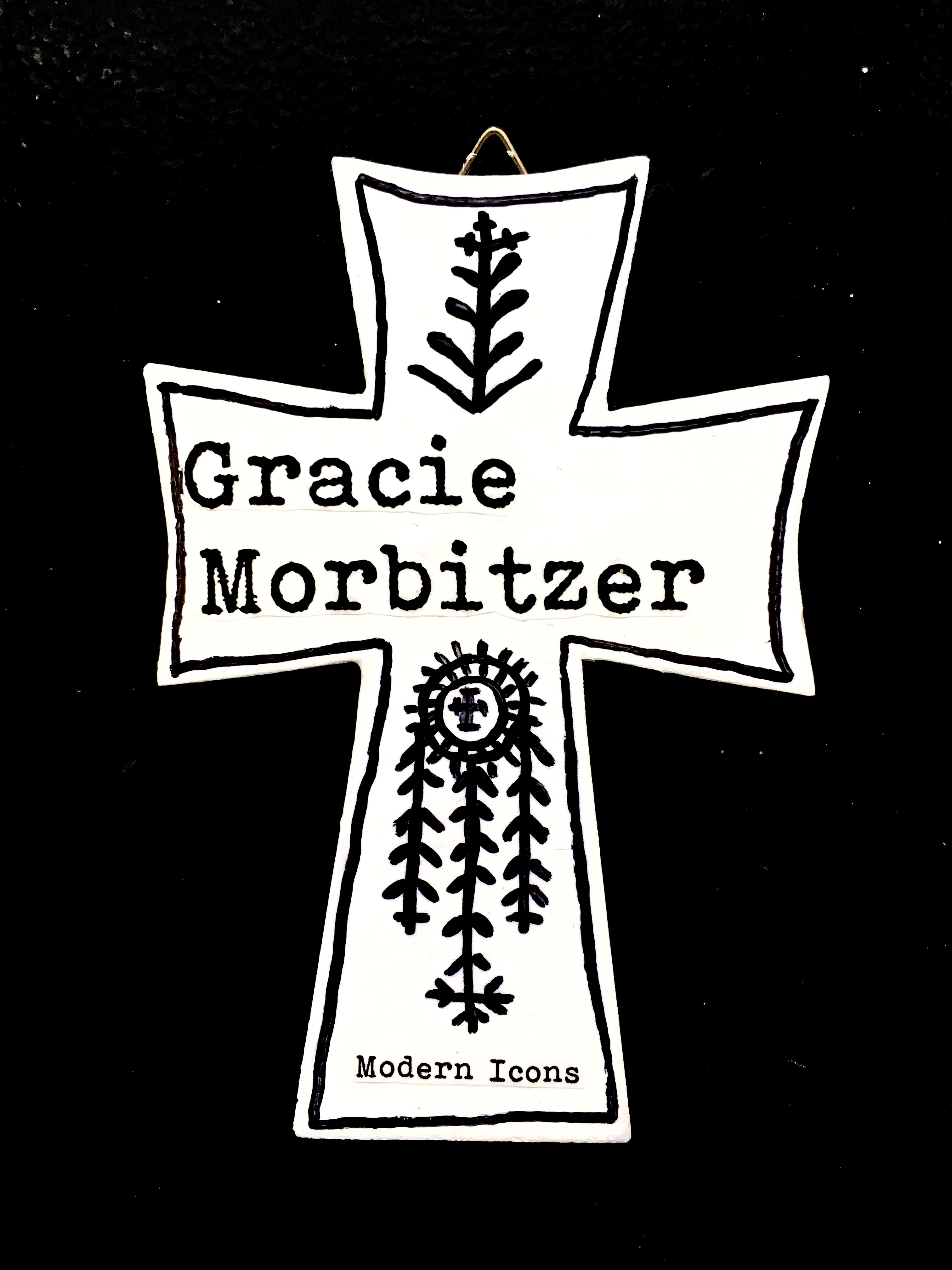Mother of Sorrows - a New Icon for Gaza
- Gracie Morbitzer

- Apr 26, 2024
- 3 min read
I know this is late - I have been wanting for months to create an icon for Gaza, but the fact is, I was unsure quite how to process it all, stuck in perfectionism, and also, hoping that the violence would be over before I would even have a chance to finish the piece. But here we are - and so here it is.
Of course I acknowledge the terrible harm and death that has been enacted upon the people of Israel by Hamas as well, and I also acknowledge that while Mary was a Jewish woman, Palestine was also the physical location of her Earthly home. Please keep these things in mind as they add complexity to the ideas expressed below.

ABOUT
Created during Holy Week while in meditation on the suffering and sorrow in Gaza, this piece is based off of images of the title for Mary "Mother of Sorrows" - also known as "Mater Dolorosa", "Sorrowful Mother", or "Our Lady of the Seven Sorrows".
This devotion comes from the prophecy of a man named Simeon in Luke's Gospel who predicts Mary will suffer seven sorrows like swords piercing her heart. Remembering her sorrows allows us to turn to Mary in our own sufferings, since she knows how it is to be in such pain.
Unlike a Pieta image of Mary in which she holds her dead son in mourning and looks at the viewer for a response, images of Our Mother of Sorrows usually depict her alone with seven swords in her heart, eyes closed or downcast. I interpret this to be representative of how alone she (and each of us) often feel in our sufferings. This is something I chose for this piece because so many victims in Gaza have been lost under rubble, or so violently killed that mothers have nothing left of their children to hold. Another reason for this choice is that Mary appeared to Rwandan girls during the Rwandan Genocide to encourage them, and asked them to pray a prayer reflecting on her seven sorrows.
Like in traditional images, she is shown with tears, eyes downcast, and hands at her heart.
Here, the seven swords are represented by stalks of the plant Drimia Maritima. It grows abundantly along the Mediterranean, and I first encountered it in late September, just before the start of the violence, while in Greece. Walking through rocky, desolate islands strewn with ancient ruins, the flowers, also dried a bit by then from the hot summer, were often the only things actively growing, shooting up tall from cliff sides. I felt that they looked like and were representative of ghosts - the ruins being so old and full of so many stories of those who had gone before. Once I returned home and did more research on this plant that had captivated me, I found that it is both toxic and medicinal, and that it is used in Palestine traditionally to mark the boundaries of farmland. It also has been used historically as spiritual protection against evil. I knew it had to be a symbolic part of this piece. The stalks can perhaps be interpreted as the "ghosts" here of people lost to this woman.
The designs on her clothing come from traditional Palestinian cross stitch embroidery called Tatreez, and represent pigeons, cypress trees, pomegranates, and olive branches: symbols of peace, connection to the land, life, and good news. Her scarf is also the Keffiyeh, a pattern derived from symbols of olive leaves and a fishing net - important representations of Palestinian connections to the sea. It is worn in such a way as well that she could be a Muslim woman with her hijab coming undone due to turmoil or a non-Muslim woman wearing it as more of a veil (like in so many traditional images of Mary) in solidarity.
The colors come from the Palestinian flag - which has been banned throughout history and used within the Tatreez designs on clothing as a method of resistance. The purple is symbolic of Holy Week and the Church season of reflection and sorrow. Her halo is gold leaf, but imperfect and with some damage, which is also symbolic of what she has been through and how it does not diminish her worth.
Lastly, the piece of wood this has been created on is left to show through in the background rather than painted over, symbolic of the bareness and exposure of sorrow, and the shape is reminiscent of a coffin, especially as it was a tray with raised edges so that one must look down into it to see the image.




Comments